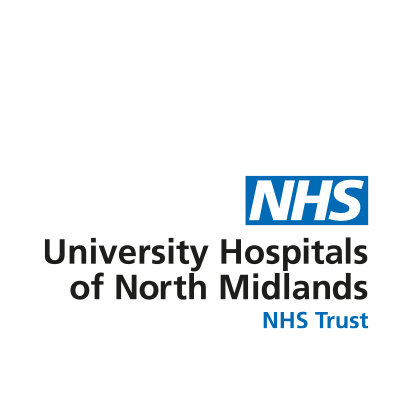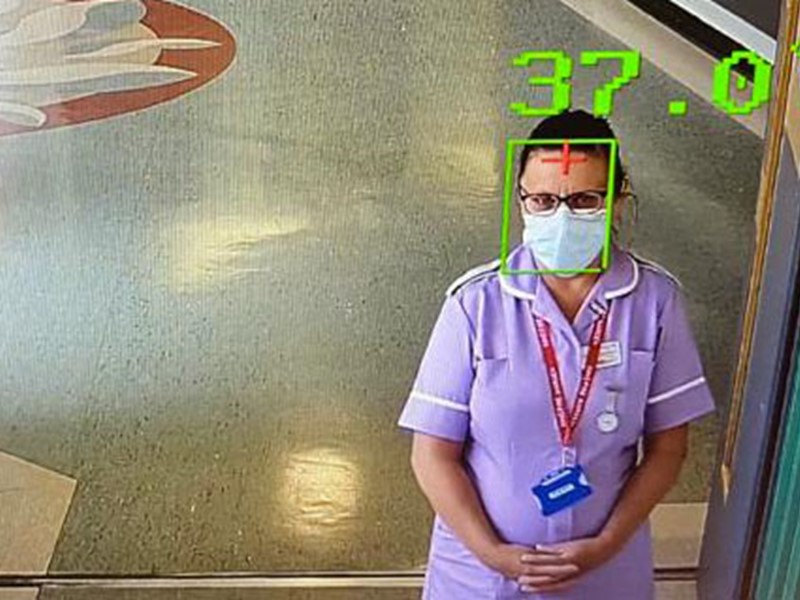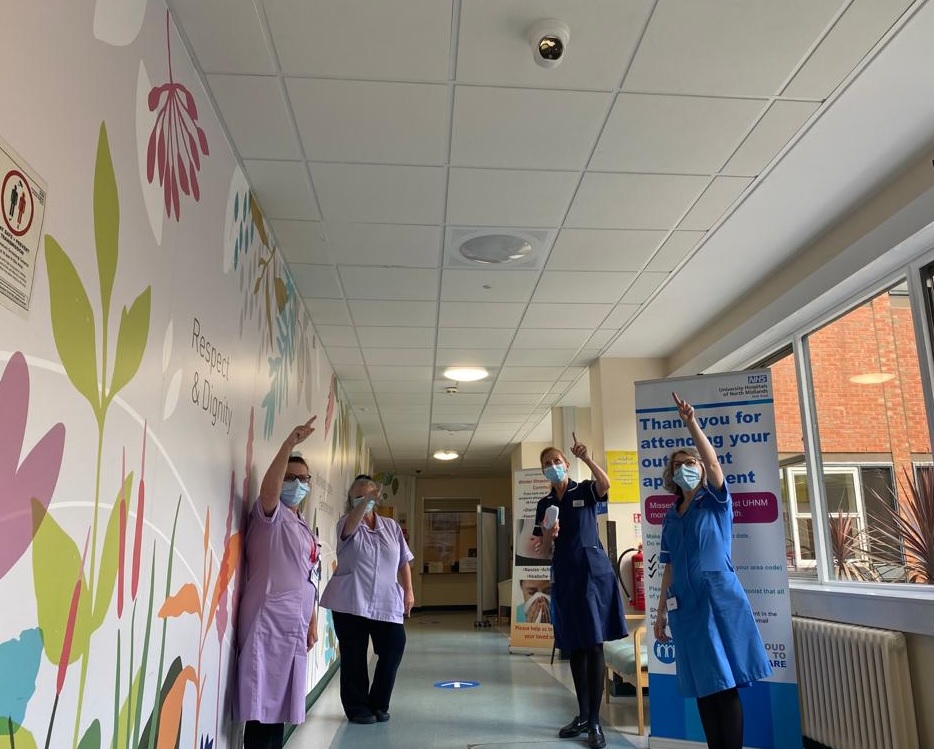
- Deployed thermal imaging cameras to identify people with high temperature
- Developed effective guidance for staff
- Boosted public confidence in safety of hospital
Background
University Hospitals of North Midlands NHS Trust operates in Staffordshire and the city of Stoke-on-Trent, providing services to approximately 900,000 people.
In line with the national ask, elective and planned work ceased when the COVID pandemic hit, this not only affected patients who were booked in for planned work and elective surgery, but also those in need of emergency care as attendances at A&E dropped considerably.
Like most organisations, the trust looked at innovative ways to address the risks of COVID and manage patients differently. Much of that new approach relied on technology such as dealing with patients virtually without the need for face-to-face contact. However, one of the other priorities for the trust was to reduce the risk of patients with COVID coming into hospital, and improve people's confidence that it would be safe to come to hospital if they needed to.
Tracking temperatures
One of the ideas the trust considered was using thermal imaging cameras in high footfall areas to identify people who may have a high temperature. They discussed the use of cameras with their key partners and technology supplier.
They then piloted the initiative. "We actually trialled it in the admin corridor, which was positive in terms of learning," says trust chief executive, Tracy Bullock, "We worked out that some things got in the way of readings, such as walking in with a cup of tea or wearing a hat. Overall, what we learned was that it would work."
The cameras were deployed across the trust and in the independent sector hospital that the trust utilised for oncology patients. They were positioned by the doors, in areas with the greatest footfall.
"We covered all areas as much as we could, including outpatients, inpatients and diagnostic clinics."
Once the cameras were set up, guidance for the operational staff was essential. The trust had to consider the appropriate infrastructure and operational needs to make sure that the system was monitored correctly. "There was regular contact with the clinical team in each of the areas" explains Heidi Poole, deputy director of IT.
"The other thing that we needed to do was develop the standard operating procedure" Tracy adds, "So if someone walked through the door with a temperature above a certain level, what did staff need to do?"
The trust decided that should a patient or visitor present with a temperature, they would be escorted to a secure area for a discussion about any other symptoms.
The team needed to get staff on board and ensure they were comfortable with the operating procedure: "Making sure you've got the right engagement with the staff and making sure you’ve got their buy in and they understand the standard operating procedure that runs alongside it is essential" Tracy concludes, "but essentially it’s your basic change management process, and it's getting your comms right."
The clinical teams were quickly able to benefit from the increased control over the flow of people into the hospital.

Getting the word out
Aside from regular communication with staff, keeping the public informed about the project was essential to its success.
"One of the main positives of this innovation has been around increasing public confidence. We know that the public were staying away from hospitals due to the concern around catching COVID and we wanted them to feel safe if they needed to come to hospital and the introduction of thermal imaging was one of the ways we did that."
Tracy explains the importance of this, "we knew the level of strokes and heart attacks couldn't have dropped to the levels we were now seeing, so we were concerned people were staying at home with these serious problems. We also knew that without early treatment of these conditions the outcomes would be far worse. It was therefore vital that we increased public confidence and started to get people back to hospital, certainly those critical patients."
"It was something that we promoted quite a bit with the local media", Tracy explains, "we worked with our local radio and TV stations and did a number of interviews." The local MPs also got involved with raising awareness and encouraging the public to feel secure in going into the hospital if they needed care.

Local funding for innovation
The trust was able to fund the project with the assistance of a grant from the Denise Coates Foundation. The £10m sum was gifted to the trust at the outbreak of the COVID-19 pandemic, with the intention of supporting innovation. Part of this local funding covered the cost of the initiative.
"During the pandemic a number of financial barriers were removed", says Tracy, "we played with a straight bat and where we could use charitable monies we did. But the removal of the usual financial constraints was liberating. And the fact that we had discussions with our board and altered our governance and decision-making arrangements during the COVID period allowed us to work at pace. It meant we just got on with it."
A growing confidence in technology
Heidi reflects on the success of the initiative, "We're often very reluctant to be first with any kind of new technology because you want to make sure that you've got the infrastructure, technical systems and security. But its really given our clinical teams a process they can rely on to manage patient flow coming into the trust. Reassurance and confidence is really the main benefit" adding "another benefit is that we can assess many people very quickly using this technology, where conventional methods can cause queues and expose staff to more risk."
Tracy agrees, "It also provided confidence to the staff, that we were monitoring our patients and that we had a better idea of who was coming through the doors and it provided patients themselves with the confidence to come back and visit hospitals."
"We were definitely a bit nervous at first, because we knew no one else in the NHS had done this before. But there was something about just biting the bullet. It's intuitive, if it goes right and you think it's going to help, you have to just go with it. That was the key bit of learning for me."